I know the feeling all too well — casting your line and waiting, just hoping for that tug signifying a catch, but it ends up being fruitless. I’m no stranger to those grueling hours spent by the water without anything substantial to show for it.
As an angler who’s been through those ups and downs myself, I’ve managed to gather 17 insightful tips from extensive research coupled with my own personal journeys on the lake. They are surefire tactics designed to elevate your carp fishing game and boost your success rate on any body of water you find yourself in.
Let’s ensure every cast we make has some weight behind it!
Key Takeaways
- Carp fishing requires specific tactics for different types of carp, such as using the right baits and rods.
- Having the right gear, including longer rods, camouflaged hooks, and braided line, is essential for successful carp fishing.
- Choosing the correct bait options like corn/maize, sweet corn, bread, nightcrawlers (earthworms), maggots, tiger nuts, or boilies can increase your chances of catching carp.
- Location and finding potential hotspots with natural food sources or submerged features can greatly improve your success in carp fishing.
Understanding Carp Fishing
Carp fishing includes various types of carp, which require specific tactics to catch successfully.
Different types of carp
I want to tell you about the many types of carp. They are all a little bit different. Some of them you can catch with a cane pole, some with a throw line, and some with bait casting rods.
- The common carp is one type. This fish is also called Cyprinus carpio.
- There’s another type of carp called the Bighead Carp. It is a big fish that I like to watch for in Lake Erie.
- The Silver Carp is another type we see in Lake Erie too.
Why carp fishing requires specific tactics
Carp fishing is a game of smarts. Each carp acts different from the next. This makes them hard to catch. So, you need special plans or tactics for each type of carp. For example, to fish triploid grass carp, you search and use bait to draw them in.
If you’re fishing by a river, the right baits and rods make all the difference! With Bighead Carp and Silver Carp in Lake Erie, we even have a whole plan just for them! They call it the Invasive Carp Tactical Plan.
I also learned not to scare off the carps. You don’t want to make too much noise in their home under water! Good tactics mean more carps!
17 Effective Tips for Carp Fishing Tactics Achievement
Let’s dive into the 17 tips that can help you catch more carp.
- Look for the best place to fish. Carp like spots with food and cover.
- Pick your bait with care. Carp eat all types of food.
- Set up your rod and reel right. The right gear helps catch more fish.
- Keep your hooks dull, not shiny. Carp are smart and stay away from things that look out of place.
- Get ready if you’re fishing in big European lakes. Big lakes need special gear and plans.
- Try using triploid grass carp fishing tactics too.
- Toss some fruit under a berry tree near where you’re fishing. Just a few fruits can draw the carp to your area.
- Fish from the shore if you can.You don’t need lots of fancy tools to catch a good fish!
- Use special rigs for carp fishing. They help keep your bait in place.
- Test different baits until you find what works best for the carp in your area.
- If one spot doesn’t work, move on to another one after some time.
- Use markers and spods to get your bait to the perfect spot.
- Try pre – baiting or creating feed areas before you cast out your line
- Watch how the carp act and what they eat.This can give hints on how to catch them!
- Wait for just the right moment before setting your hook
- Play and land the fish with care once hooked.Make sure not pull too fast or hard!
- Be patient.Fishing takes time, but it is worth it when you finally reel in a big one!
Essential Gear for Carp Fishing
To have a successful carp fishing session, it is essential to have the right gear, such as high-quality rods, reels, and lines that can handle the weight and power of big carp.
Rods, reels, and line
When it comes to carp fishing, having the right gear is essential. Here are some important tips for choosing the right rods, reels, and line:
- Longer rod: A longer rod, around 12 to 13 feet, is recommended for carp fishing. This will give you better leverage when playing and landing the fish.
- Camouflaged hooks: Using camouflaged or dark-colored hooks specifically designed for carp fishing can increase your chances of success. Carp have good eyesight and can be wary of bright or shiny hooks.
- Rod pod: Consider investing in a rod pod, which is a specialized stand that holds multiple rods securely. This can make it easier to manage multiple lines and keep them organized while you fish.
- Medium to medium-heavy spinning rod: For carp fishing in a lake, a medium to medium-heavy spinning rod is recommended. Pair it with a spinning or spin-casting reel with a good drag system.
- Braided line: Opt for braided line instead of monofilament when carp fishing. Braided line has greater strength and sensitivity, allowing you to detect subtle bites and handle powerful runs from big carp.
- Hook size and line capacity: Use size 2 to 6 hooks depending on the size of the bait and fish you’re targeting. Make sure your reel has enough line capacity to hold at least 120 yards of 12-pound test line.
Terminal tackle and rigs
Terminal tackle and rigs are crucial components of successful carp fishing. Here are some important points to consider:
- Essential gear: High-quality rods, reels, and lines are necessary for handling the strength and size of carp.
- Terminal tackle: Use strong hooks, swivels, and lead weights to ensure your rig is secure and able to handle the weight of carp.
- Carp fishing rigs: There are various types of rigs that can be used, such as the hair rig or the chod rig. Each rig has its own purpose and advantages depending on the fishing conditions.
- Bait selection: Choose bait that appeals to carp, such as boilies, pellets, or sweetcorn. Experiment with different flavors and textures to find what works best.
- Presentation techniques: Properly set up your rig to present the bait in an enticing manner. This includes adjusting the length of the hair rig or using a pop-up presentation for added visibility.
- Adjusting rigs based on carp behavior: Pay attention to how carp respond to your bait and adjust your rig accordingly. If they seem cautious, try downsizing your hook or changing the type of bait you’re using.
Bait options
When it comes to Carp fishing, choosing the right bait is important. Here are some popular options:
- Corn/Maize: This is a staple and classic choice for Carp fishing. It can be used on its own or combined with other baits.
- Sweet corn: Carp find the sweet taste of corn irresistible. It can be boiled or canned and used as bait.
- Bread: Plain white bread or even moldy bread can be effective in attracting Carp. Tear it into small pieces or use it on a hair rig.
- Nightcrawlers (earthworms): These worms are a natural favorite of Carp. Thread them onto a hook or use them in combination with other baits.
- Maggots: These small, wriggling insects are highly attractive to Carp. Use them as a hook bait or combine them with other baits.
- Tiger nuts: Soaking tiger nuts overnight releases their natural sugars, making them very appealing to Carp. Use them on their own or in combination with other baits.
- Boilies: These specially formulated balls of bait come in various flavors and sizes. They can be boiled or steamed and used as a single bait or in combination with others.
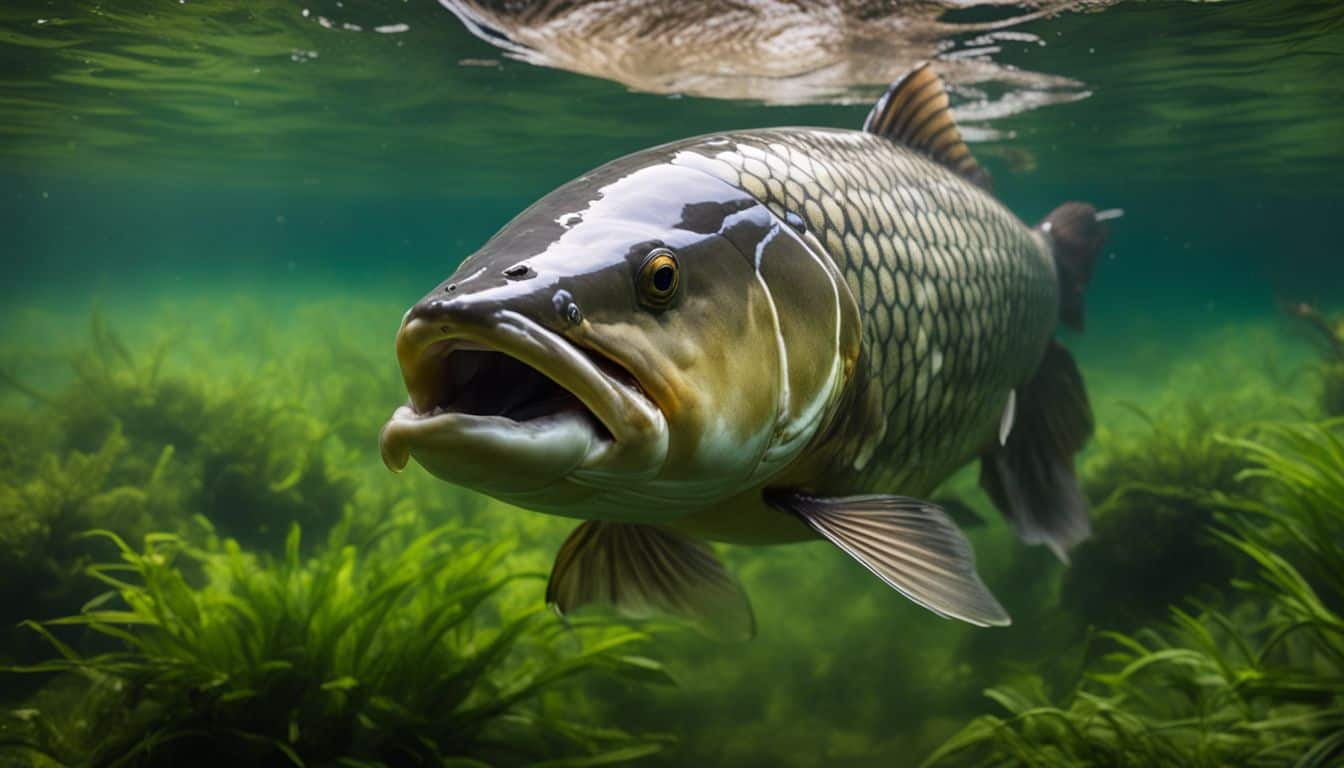
Location and Finding Carp
Location and Finding Carp is crucial for successful carp fishing. Learn how to identify potential hotspots and use technology to locate these elusive fish.
Identifying potential carp hotspots
Finding the perfect location is key to carp fishing success. Here are some tips to help you identify potential carp hotspots:
- Look for shallow shelves and areas with natural food sources. These spots attract carp, as they provide ample feeding opportunities.
- Pay attention to river bends and deeper pools. Carp often gather in these areas, especially where there is a steady flow of water and access to food.
- Keep an eye out for submerged features like drop – offs, gravel bars, or weed beds. Carp like to hang around these structures as they offer protection and easy access to food.
- Use technology like fish finders or underwater cameras to locate carp. These tools can help you pinpoint their exact whereabouts, saving you time and effort.
- Talk to local anglers or visit fishing forums to gather information about popular carp fishing spots in your area. They may have insider tips on productive locations.
Using technology and tools to locate carp
Technology and tools have revolutionized the way we locate carp while fishing. With advancements in fishing technology, anglers now have various options to spot carp visually. Fishfinders and underwater cameras allow us to see beneath the surface and identify potential hotspots where carp tend to feed.
These tools provide valuable information about the fish’s behavior, feeding patterns, and even their numbers. Additionally, there are mobile apps available that help track carp movement based on real-time data, enabling us to make informed decisions about our fishing spots.
By utilizing these technological advancements and angler tools, we can enhance our carp fishing tactics and increase our chances of a successful catch.
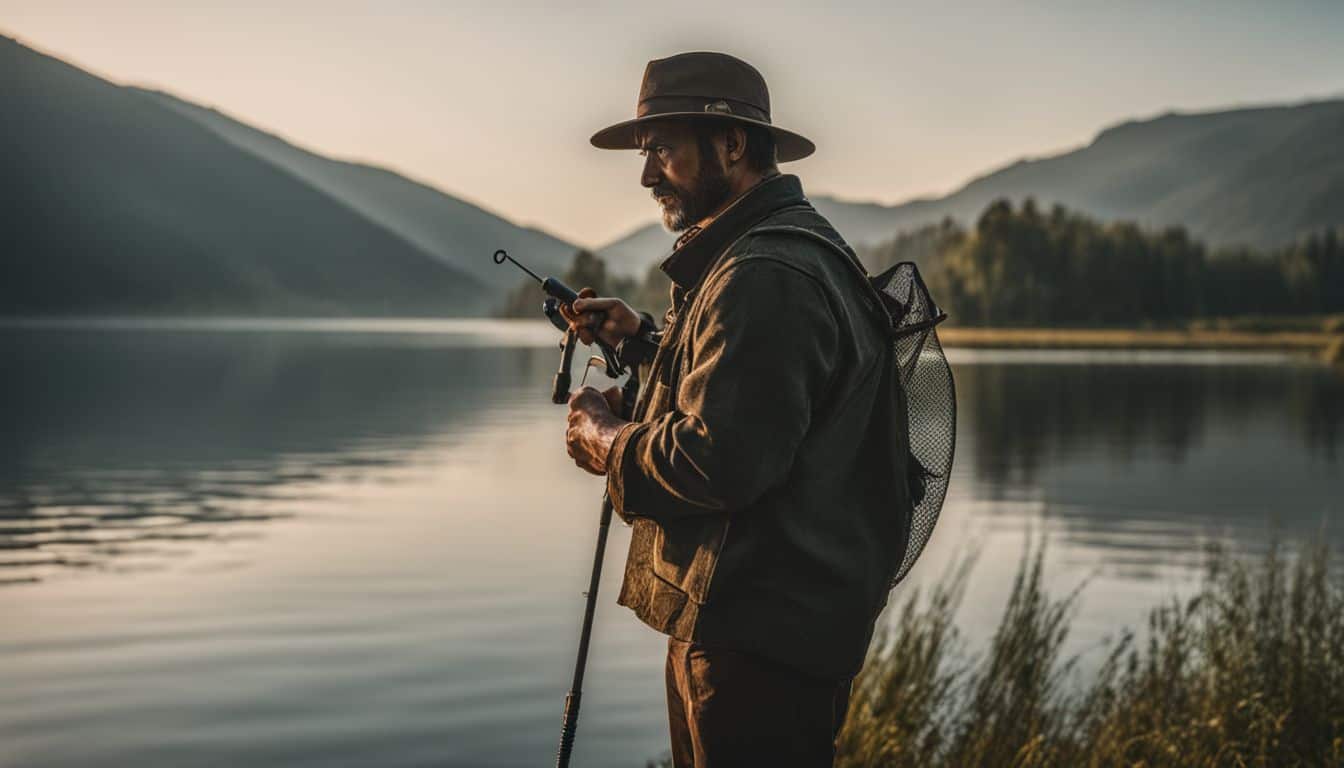
Effective Casting Techniques
Mastering the art of casting is crucial for carp fishing success. From achieving accuracy and distance to using markers and spodding, these techniques can greatly improve your chances of hooking a big one.
Read on to discover how you can take your casting skills to the next level and land that trophy carp!
Casting accuracy and distance
Casting accurately and achieving the right distance is important in carp fishing. Here are some tips to help you improve your casting technique:
- Visualize the path of your rod tip.
- Adjust your hand and arm position for better control.
- Keep your fishing line in good condition.
- Cast with just enough strength to reach your target.
- Consider factors like your rod, reel, tackle, and technique when trying to increase casting distance.
Using markers and spodding
Using markers and spodding can greatly improve your carp fishing tactics. Here are some tips to make the most out of these techniques:
- Spods are valuable tools for accurate and consistent bait delivery.
- They allow you to deposit hard-to-cast baits precisely and consistently.
- Marker floats can help improve bait presentation and attract carp to your fishing spot.
- Experiment with different spodding tactics and mixtures to enhance bait presentation and attract more carp.
- Using markers and spodding techniques can significantly improve your casting accuracy in carp fishing.
- Make sure to choose the right spodding gear and practice your casting technique for better success in carp fishing tactics.
Presentation techniques
Improving your presentation techniques is key to successful carp fishing. Here are some effective tips:
- Practice your casting skills regularly.
- Focus on accuracy and distance when casting.
- Use markers to help you cast to the same spot consistently.
- Utilize the spodding technique for precise bait placement.
- Experiment with different bait presentations to attract carp.
- Adjust your presentation based on the behavior of the fish.
- Pay attention to environmental factors that may affect your presentation.
Baiting Strategies
When it comes to baiting strategies for carp fishing, there are various options to consider based on their effectiveness, including pre-baiting and timing.
Different bait options and their effectiveness
Understanding the effectiveness of different bait options is an integral part of successful carp fishing. Here’s a table detailing some of these options and their benefits:
| Bait Type | Effectiveness |
|---|---|
| Corn/Maize | Corn is a classic choice for carp bait. It’s widely available in forms such as whole kernel, frozen, or canned. It’s especially effective in attracting carp due to its high visibility and scent. |
| Boilies | Pre-baiting well with boilies in early spring can have a significant impact on the entire fishing season. They are durable and available in various flavors, making them a reliable choice. |
| Shad | Cut shad is a great option for carp fishing. Its strong smell and oily texture are irresistible to carp. |
| Chicken Liver | Chicken liver is another highly effective bait for carp fishing. Its strong scent draws carp from afar. |
| Shrimp | Shrimp is another good option. It’s easy to source and its natural aroma is very attractive to carp. |
| Nightcrawlers | Nightcrawlers or earthworms are a traditional bait choice and can be effective in attracting carp, especially in warmer waters. |
Choosing the right bait based on your fishing conditions and the preferences of the carp in your location can significantly increase your success rates.
Pre-baiting and creating feeding areas
Pre-baiting and creating feeding areas is a key tactic for successful carp fishing. It involves attracting fish to a specific spot by regularly baiting it with cheap bait. Here are some tips to help you effectively pre-bait and create feeding areas:
- Use cheap bait: Pre-baiting spots regularly with inexpensive bait can attract carp and get them feeding.
- Spread the bait: When pre-baiting, it’s important to spread the bait around the area you want to target. This encourages fish to feed in that specific spot.
- Experiment with different baits: Carp have different preferences when it comes to bait, so it’s worth trying out different options. Maggots, casters, and worms can be enticing choices.
- Bait up for both rods: If you’re using multiple fishing rods, make sure to pre-bait for each rod. This increases your chances of attracting fish in the targeted area.
- Be patient: Pre-baiting takes time to work its magic. It may take several days or even weeks for fish to start actively feeding in the pre-baited area.
Timing and frequency of baiting
Baiting is an important part of carp fishing tactics, and timing and frequency play a crucial role in your success. Here are some tips to help you with your baiting strategy:
- Be patient and observant: Watch the carp’s behavior and feeding patterns before deciding when to bait. Wait for the right moment when they are actively feeding.
- Bait during peak feeding times: Carp are more likely to eat during early morning or late afternoon when they are most active. Plan your baiting sessions accordingly.
- Start with small amounts: Begin by introducing a small amount of bait to attract the carp’s attention without overwhelming them. This will help build their confidence in feeding.
- Increase bait gradually: Once the carp start feeding on your initial bait, gradually increase the amount over time. This will encourage them to feed more aggressively.
- Spread out your baiting sessions: Instead of baiting heavily all at once, spread out your sessions over multiple days or nights. This can create a sustained feeding area and keep the carp coming back for more.
- Consider water temperature: In warm water with good oxygen levels, heavy baiting may not be as effective as in colder conditions. Experiment with different amounts and adjust based on how the carp respond.
- Adapt to changing conditions: If you notice that the carp’s feeding patterns have changed, adjust your timing and frequency of baiting accordingly. Stay flexible and responsive to maximize your chances of success.
Rig Selection and Setup
When it comes to rig selection and setup, choosing the right rig for different conditions is crucial for success in carp fishing.
Choosing the right rig for different conditions
Choosing the right rig for Carp fishing is really important. I’ve learned that different conditions require different rigs, so here are some tips to help you make the right choice:
- Consider the water conditions: The type of rig you use will depend on whether you’re fishing in a lake, river, or pond. Each has its own challenges and requires a specific rig for success.
- Think about the size of Carp: The size of Carp you’re targeting will also impact your rig selection. Smaller Carp may require a more delicate setup, while larger ones may require stronger gear to handle their power.
- Assess the fishing location: Is there a lot of weed or obstacles in the water? If so, you’ll need a rig that can handle these conditions and prevent snags or tangles.
- Factor in your experience level: As a beginner angler, it’s best to start with simpler rigs that are easier to set up and manage. As your skills grow, you can experiment with more advanced rigs.
- Understand the advantages of each rig: Different rigs offer various benefits, such as improved presentation or increased hooking potential. Knowing the strengths of each rig will help you choose the most effective one for your circumstances.
Setting up rigs for optimal presentation
When it comes to Carp fishing, setting up your rigs in the right way can make a big difference in getting the perfect presentation. Here are some tips for setting up your rigs for optimal presentation:
- Use the Ronnie rig: This rig is considered one of the best for Carp fishing. It allows the bait to sit perfectly on the lakebed, increasing your chances of a bite.
- Try hinge rigs: Hinge rigs are another great option. They provide a natural movement underwater, making your bait look more enticing to the Carp.
- Experiment with zig rig setups: Zig rigs are effective when Carp are feeding off the bottom. They allow you to present your bait at different depths in the water column.
- Consider using float rigs: Float rigs are ideal for fishing with floating (pop-up) baits. They keep your bait suspended in the water, catching the attention of nearby Carp.
- Use an SPOD or SPOMB rocket feeder: These tools help you accurately deliver bait to your desired spot. They ensure that your bait lands precisely where you want it, increasing your chances of attracting Carp.
Adjusting rigs based on carp behavior
When fishing for carp, it’s important to adjust your rigs based on the behavior of the fish. Here are some tips to help you do just that:
- Observe the carp: Take note of how the carp are behaving in the water. Are they actively feeding near the surface or are they staying closer to the bottom? This will help you determine where to position your rig.
- Choose the right rig: There are different types of rigs that can be effective for carp fishing, such as hair rigs and pop-up rigs. Consider using a rig that matches the feeding behavior of the carp you’re targeting.
- Experiment with hook sizes: Carp have varying preferences when it comes to bait and hook sizes. If you notice that the carp are avoiding your current rig, try adjusting the size of your hook to better match their feeding habits.
- Vary your bait presentation: Carp can be picky eaters, so it’s important to present your bait in a way that mimics natural food sources. Adjusting your rig’s setup or adding additional attractants can make your bait more enticing to carp.
- Be patient: Sometimes it takes time for carp to become comfortable with a new rig setup. Don’t be afraid to experiment and make adjustments throughout your fishing session until you find what works best for attracting bites.
Patience and Observation
Observing carp behavior and patiently waiting for the perfect moment to strike are crucial skills in successful carp fishing. Discover how paying attention to environmental factors can enhance your chances of a great catch by reading the full blog post here!
Understanding carp behavior and feeding patterns
Carp are interesting fish with unique behavior and feeding habits. They can be quite competitive when it comes to finding food, often pushing out other species in the process. This means that if you’re looking to catch carp, you’ll want to understand their behavior and know where they like to feed.
Carp have a diverse diet, which allows them to adapt and thrive in different environments. They can eat a wide variety of organisms, from insects and worms to plant matter and even small fish.
Their ability to find food in various water conditions makes them an exciting challenge for anglers.
When fishing for carp, it’s important to consider the water conditions as well. Carp may cause localized turbidity issues due to their feeding behavior of digging through bottom sediments in search of food.
So be aware of how this might affect your fishing experience.
Waiting for the right moment to strike
When it comes to carp fishing, waiting for the right moment to strike is absolutely crucial. Patience and observation skills are key in identifying that opportune moment. By carefully observing the carp’s behavior and feeding patterns, you can strategically wait for the perfect time to make your move.
This tactical approach requires keen attention to detail and a deep understanding of the fish’s habits. So, take your time, be patient, and when you spot that moment of opportunity, go for it with precision and strategy.
Paying attention to environmental factors
When it comes to carp fishing, paying attention to environmental factors is key. Factors such as wind conditions and sun conditions can greatly affect your success in catching carp.
Carp are sensitive to changes in their environment, so being aware of these factors will help you determine the best time and location for fishing.
Another important aspect is observing the behavior around the water and minimizing disturbance to the carp’s environment. Fish are easily spooked by loud noises or sudden movements, so try to be quiet and avoid causing too much commotion.
This will increase your chances of getting a bite.
Carp have shown an impressive adaptability to different environmental conditions. They can survive even in waters of marginal quality, which means they can thrive in various habitats.
Understanding this adaptability can give you insights into their behavior and help you make informed decisions while fishing.
Playing and Landing Carp
When playing and landing carp, it is important to use proper technique and equipment to ensure a successful catch.
Proper technique for playing and landing carp
Playing and landing carp requires skill and precision. Here are some important tips to ensure a successful catch:
- Use a strong and durable fishing rod and reel that can handle the weight and strength of a carp.
- When playing the fish, keep a steady pressure on the line to tire out the carp without breaking it.
- Keep the rod tip up while reeling in the fish to maintain control and prevent the line from snagging on obstacles.
- Avoid jerking or yanking the rod when the carp makes sudden movements, instead, smoothly guide it back towards you.
- Be patient and let the fish run if it wants to, but always maintain tension on the line to avoid losing it.
- Use a landing net with a large enough opening to scoop up the carp without any trouble.
- When lifting the fish out of the water, support its weight by cradling its belly with one hand while holding onto its tail with your other hand.
- Take care when handling carp as they have sharp fins that can easily cause injury; use gloves or wet hands for better grip.
- If you plan on releasing the carp, keep it submerged in water while removing hooks and taking photos to minimize stress.
Using the right equipment and avoiding common mistakes
As a fishing enthusiast, I know how important it is to use the right equipment and avoid common mistakes when it comes to carp fishing. Here are some tips to help you achieve success:
- Choose a medium – action fishing rod that is around 6 feet long. This will make it easier for you to land bigger fish.
- Avoid over spombing, which means excessive baiting. It’s important to find the right balance and not overwhelm the fish with too much bait.
- Another common mistake is over pre – baiting, where you bait the area too much before the fish are actively feeding. Take your time and observe the carp’s behavior before adding more bait.
- Be careful not to over bait when the fish are not actively feeding. Timing is key in carp fishing, so make sure to bait when the carp are most likely to be hungry.
- Before baiting, spend some time observing the carp’s behavior and feeding patterns. This will help you determine the best time and amount of bait to use.
Conclusion on Carp Fishing Tactics
In conclusion, these 17 effective tips for carp fishing tactics will help you achieve success on your next fishing adventure. From understanding different types of carp to selecting the right gear and bait, each tip is designed to enhance your chances of catching carp.
Remember to be patient, observe their behavior, and make sure your presentation is spot-on. With these strategies in mind, you’ll be well-equipped to master the art of carp fishing and enjoy a rewarding experience on the water.
FAQs on Carp Fishing Tactics
1. What is carp fishing?
Carp fishing is a type of fishing that focuses on catching carp, a freshwater fish known for their size and fighting ability.
2. Are the tips in this article suitable for beginners?
Yes, the tips provided in this article are suitable for both beginner and experienced anglers looking to improve their carp fishing tactics.
3. Can I use these tips in any location?
Yes, the tips can be applied in various locations where carp can be found, including lakes, rivers, ponds, and reservoirs.
4. Do I need expensive equipment to succeed with these tactics?
No, you don’t need expensive equipment to implement these tactics successfully. Basic gear such as rods, reels, hooks, baiting tools are sufficient.
5. How long does it take to achieve success with these tactics?
The time it takes to achieve success with these tactics may vary depending on factors such as experience level and environmental conditions. With practice and patience though, you can see positive results over time.

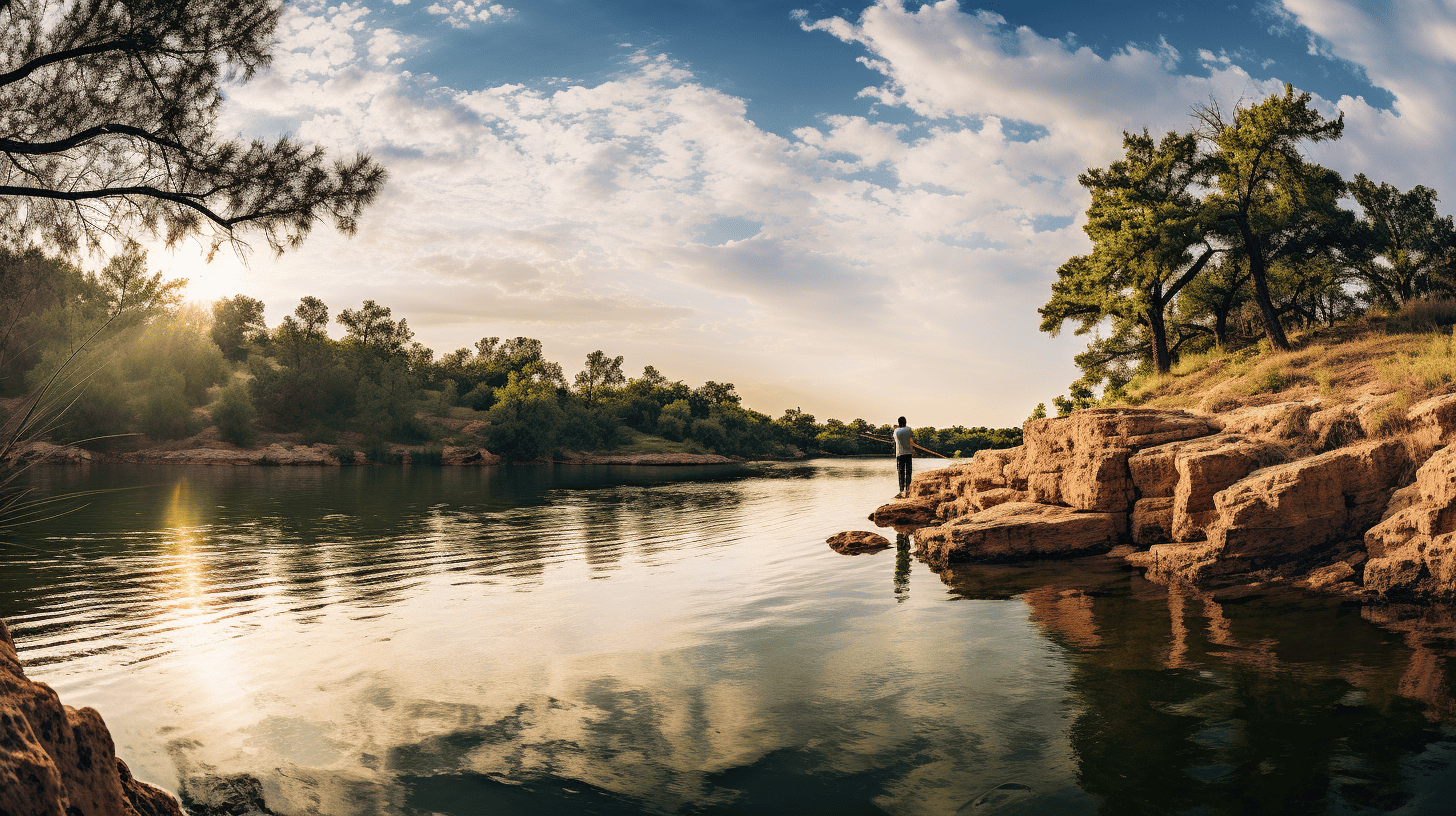
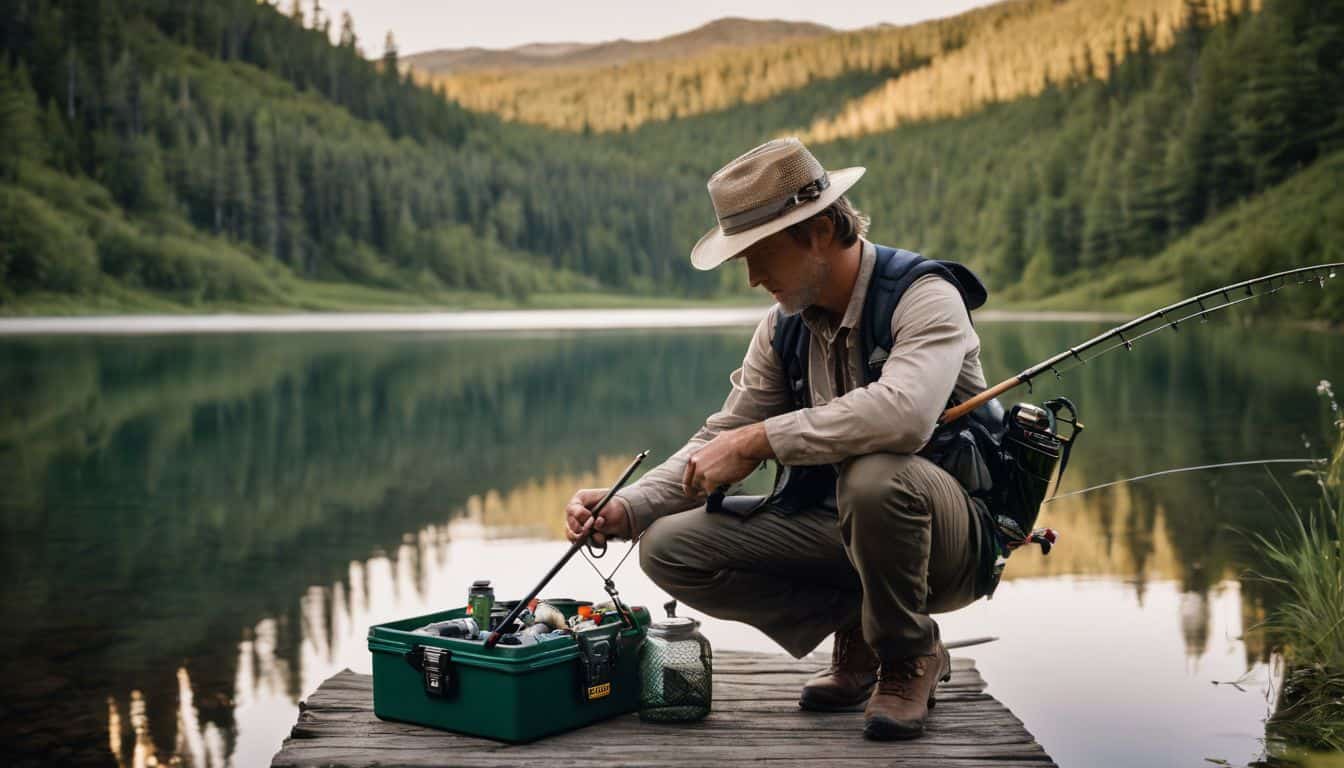
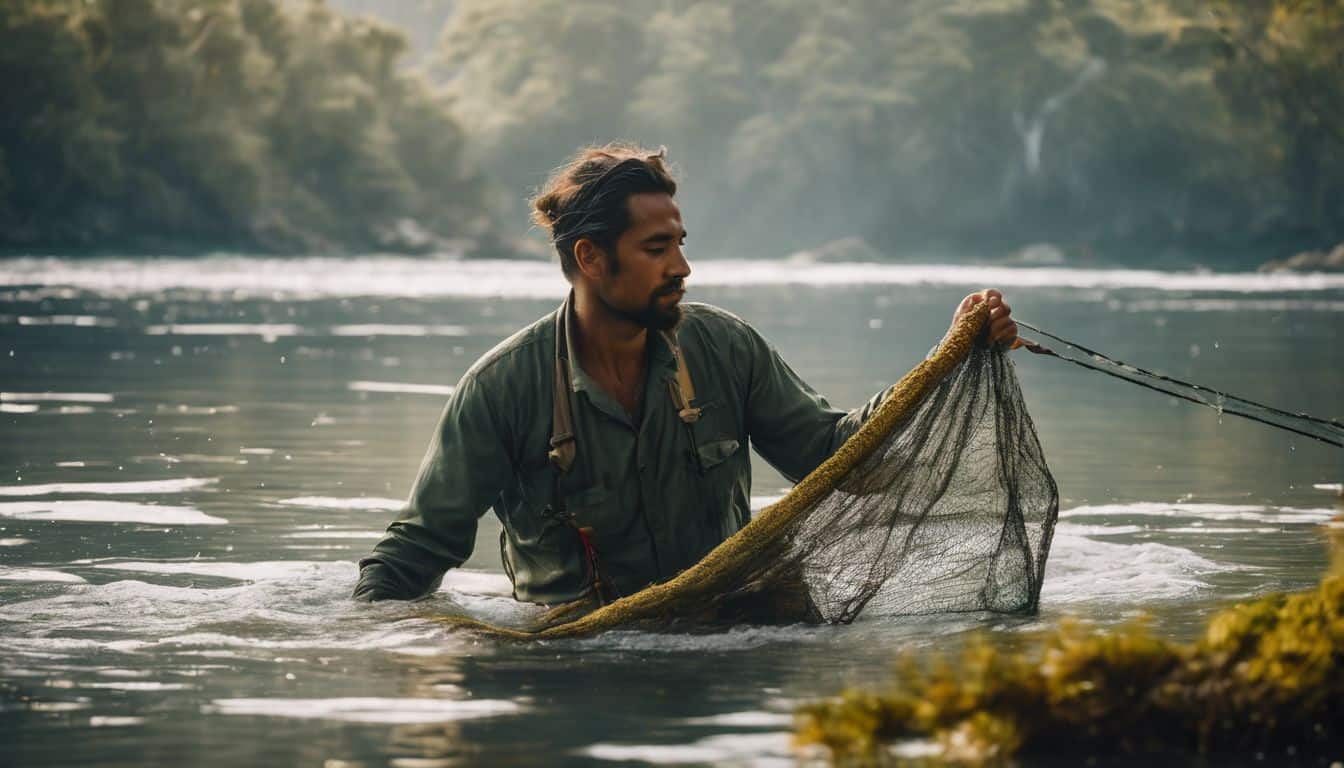
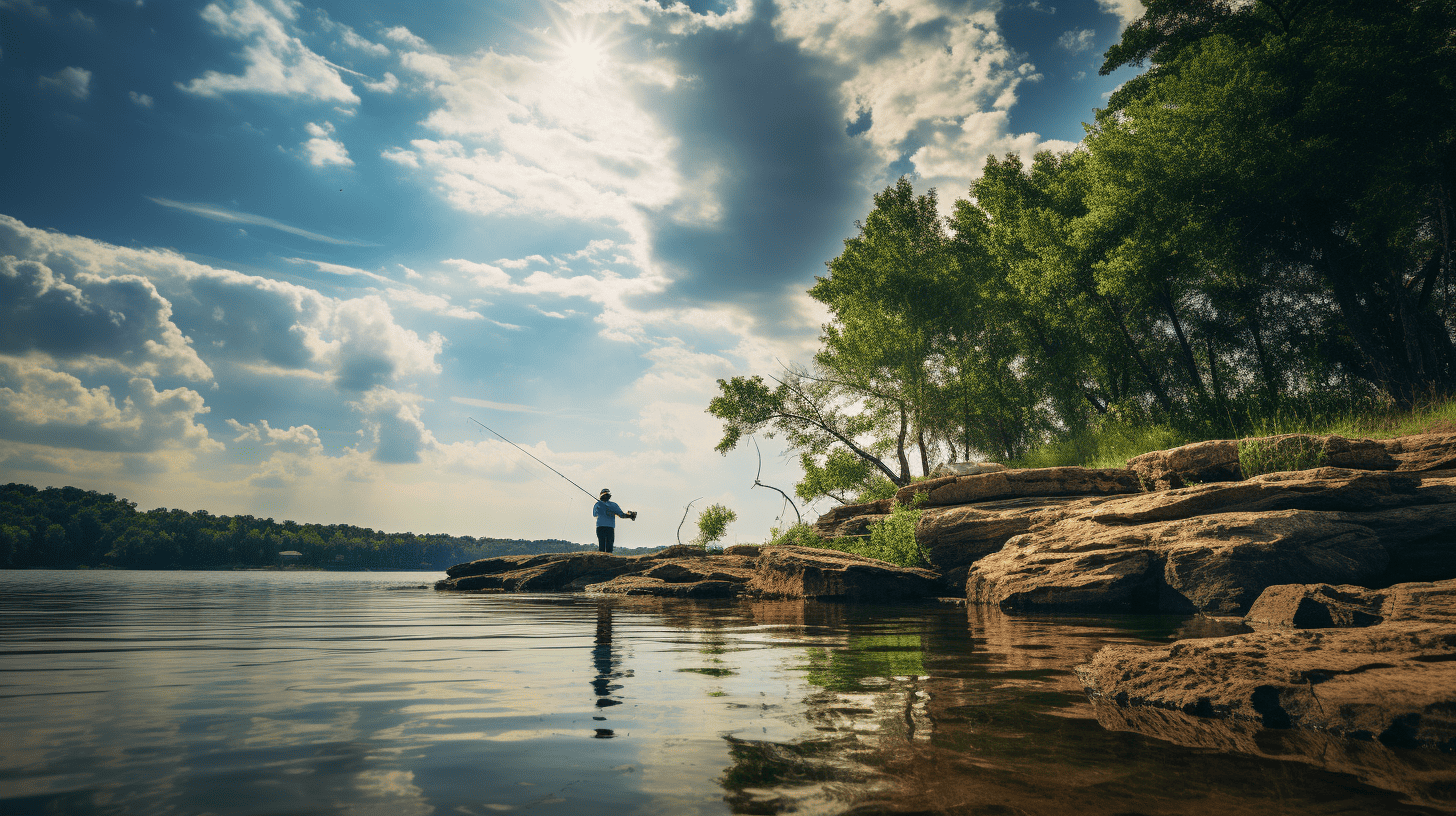
Leave a Reply